Bowen Therapy and Autism
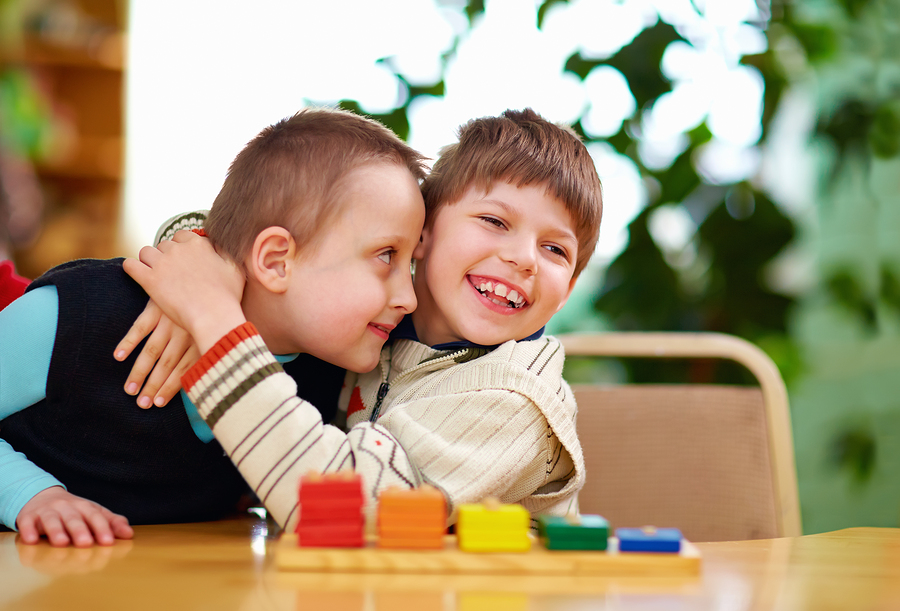
What is autism?
Autism is a complex neurobehavioral condition that includes impairments in social interaction and developmental language and communication skills combined with rigid, repetitive behaviors. It begins early in childhood and lasts throughout a person’s life. Because of the range of symptoms, this condition is now called autism spectrum disorder (ASD). It covers a large spectrum of symptoms, skills, and levels of impairment. ASD ranges in severity from a handicap that somewhat limits an otherwise normal life to a devastating disability that may require institutional care.
Not just one
We know that there is not one autism but many subtypes, most influenced by a combination of genetic and environmental factors. Because autism is a spectrum disorder, each person with autism has a distinct set of strengths and challenges. The ways in which people with autism learn, think and problem-solve can range from highly skilled to severely challenged. Some people with ASD may require significant support in their daily lives, while others may need less support and, in some cases, live entirely independently.
Symptoms
Children with autism have trouble communicating. They have trouble understanding what other people think and feel. This makes it very hard for them to express themselves either with words or through gestures, facial expressions, and touch.
A child with ASD who is very sensitive may be greatly troubled — sometimes even pained — by sounds, touches, smells, or sights that seem normal to others. People with autism thrive on routine, and the ability to predict the outcomes of certain behaviors and places. A break in routine or exposure to loud, overstimulating environments can overwhelm a person with ASD, leading to outbursts of anger, frustration, distress, or sadness.
Examples
Children who are autistic may have repetitive, stereotyped body movements such as rocking, pacing, or hand flapping. They may have unusual responses to people, attachments to objects, resistance to change in their routines, or aggressive or self-injurious behaviour. At times they may seem not to notice people, objects, or activities in their surroundings. Some children with autism may also develop seizures. And in some cases, those seizures may not occur until adolescence. Autism is often accompanied by sensory sensitivities and medical issues such as gastrointestinal (GI) disorders, seizures or sleep disorders, as well as mental health challenges such as anxiety, depression and attention issues.
Uneven skill development
Some people with autism are cognitively impaired to a degree. In contrast to more typical cognitive impairment, which is characterized by relatively even delays in all areas of development, people with autism show uneven skill development. They may have problems in certain areas, especially the ability to communicate and relate to others. But they may have unusually developed skills in other areas, such as drawing, creating music, solving math problems, or memorizing facts. For this reason, they may test higher — perhaps even in the average or above-average range — on nonverbal intelligence tests.
The on-set
Symptoms of autism typically appears during the first three years of life. Some children show signs from birth. Others seem to develop normally at first, only to slip suddenly into symptoms when they are 18 to 36 months old. However, it is now recognized that some individuals may not show symptoms of a communication disorder until demands of the environment exceed their capabilities. Autism is four times more common in boys than in girls. It knows no racial, ethnic, or social boundaries. Family income, lifestyle, or educational levels do not affect a child’s chance of being autistic.
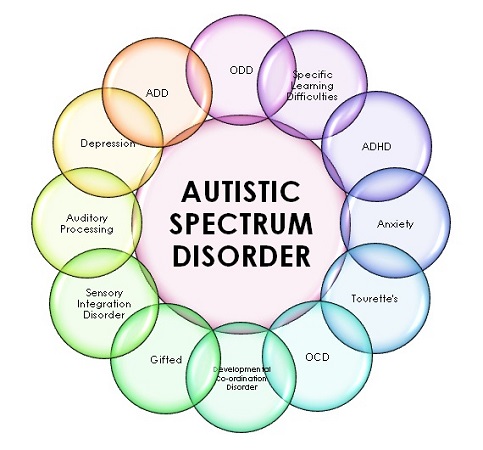
On the rise –
Autism is said to be increasing; however, it is not entirely clear whether the increase is related to changes in how it is diagnosed or whether it is a true increase in the incidence of the disease.
Autism is just one syndrome that now falls under the heading of autism spectrum disorders. Previous disorders that are now classified under the umbrella diagnosis of ASD or a social communication disorder include:
Autistic disorder –
This is what most people think of when they hear the word “autism.” It refers to problems with social interactions, communication, and imaginative play in children younger than 3 years.
Asperger’s syndrome –
These children don’t have a problem with language — in fact, they tend to score in the average or above-average range on intelligence tests. But they have the same social problems and limited scope of interests as children with autistic disorder.
Pervasive developmental disorder or PDD –
also known as atypical autism. This is a kind of catch-all category for children who have some autistic behaviors but who don’t fit into other categories.
Childhood disintegrative disorder –
These children develop normally for at least two years and then lose some or most of their communication and social skills. This is an extremely rare disorder and its existence as a separate condition is a matter of debate among many mental health professionals.
Helping rather than curing –
There is no known ‘cure’ for autism. This does not mean, however, that nothing can be done to help a person who is on the autism spectrum. The type of treatment someone receives for autism spectrum disorder depends on his or her individual needs. Because ASD is a spectrum disorder (meaning some children have mild symptoms and others have severe symptoms) and each child who has it is unique, there are a variety of treatments.
They can include different kinds of therapies to improve speech and behaviour, and sometimes medications to help manage any medical conditions related to autism.
The treatments an individual can benefit from most depends on their situation and needs, but the goal is the same: to reduce the symptoms and improve learning and development. As many people with autism have additional medical conditions such as sleep disturbance, seizures and gastrointestinal (GI) distress, addressing these conditions can improve attention, learning and related behaviors.
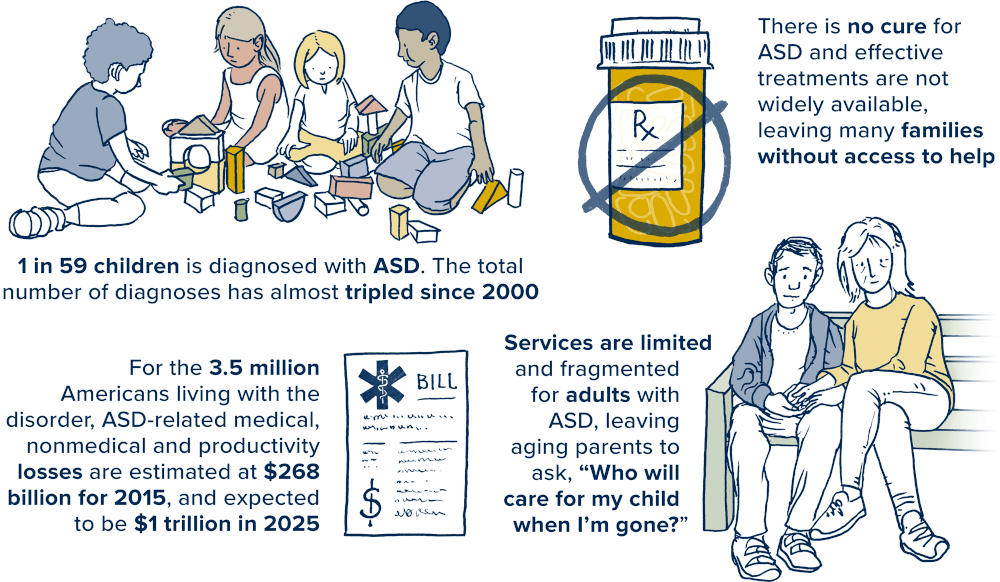
Can the Bowen Technique help people with Autism?
Many people presume that Bowen Therapy is primarily used to treat musculoskeletal problems rather than complex neurological conditions. However this is incorrect. Bowen Therapy works directly on the autonomic nervous system. Practitioners use precise moves on specific locations on the body, working on nerve receptors in the skin, and over muscles, tendons, ligaments and the fascia that surround these tissues. This delivers a signal to the nervous system and prompts the body to switch from a sympathetic state to a parasympathetic state, during which the body rests, relaxes, heals and repairs. Bowen Therapy is holistic and focuses on the whole body restoring balance through the autonomic nervous system. It can have a profound effect on neurological conditions, including Autism.
Documented evidence
There aren’t any clinical style studies supporting Bowen Therapy in the treatment of Autism, Aspergers and ADHD, however, there is a significant amount of documented evidence by Bowen Technique therapists in a clinic in Cardiff. They have been recording their findings since the late 90’s.
Howard Plummer and Helen Watson in Cardiff have done extensive work on the effects of Bowen Therapy treatments on Autism, ADHD and Aspergers. Their documentation and results are very promising. Godfrey (2013) discusses how a two-year study by (Eyre 2004) examined the question “Can the brain be “re-wired” to help children with disability?” Godfrey argues that the research into this area and the evidence collected by the Cardiff clinic of Bowen Therapist warrants further investigation of the effectiveness Bowen Therapy to address this issue. Their work suggests that Bowen Therapy may help stimulate the brain to make new connections. Plummer and Watson have now treated hundreds of children and adults with Bowen and have built up an impressive file of case histories as well as an increasing knowledge of what Bowen can do to help the many problems that these conditions inflict.
Results of the Cardiff Clinic
The children they treated in their Cardiff clinic after Bowen treatments had improved concentration, sleep behaviours, less obsessive or repetitive behaviour, less outburst of anger and destruction of property as well as improved eye contact and a general sense of contentment.
Ideal for Children
Bowen therapy is ideal for children due to its gentle nature. It can be done with very gentle pressure and still be effective. It is done with clothing on, making the child feel more comfortable. Children are generally more active, thus helping the energetics of the therapy to work better and faster. Children come with no preconceptions or expectations of if/how the therapy will work. So, they tend to be more receptive than adults.
A less formal setting
For children a treatment takes place either on the treatment couch, with the child sitting on the parent’s lap, or even on the floor with mats and blankets – whatever is more comfortable and reassuring for the child. A series of short precise moves are made with short breaks in between. During a treatment the child doesn’t have to remain still and the session can also be adapted to make allowances for the child’s behaviour, tolerance and nature.
Non-Invasive
Compared to other treatments there are very few moves made with Bowen. In Bowen therapy there is a philosophy of “less is more”, so as to not overstimulate the body. A little goes a long way. The therapy causes no pain or discomfort, so children learn that it is not an unpleasant experience and are therefore less anxious than perhaps they would be with other treatments.
Preventative maintenance
Weekly or fortnightly treatments over the period of months have been found very beneficial for those with Autism. The time required, and degree of results are very individual. Some children respond quickly, and others may take a little longer, but usually both children and parents benefit from the sessions. Children – and parents – benefit from maintenance treatments as they grow and their overall health improves.
Never too late
It is important to emphasise that children with conditions in the autistic spectrum can be treated with great benefit with Bowen even if they are older, that is, upwards of 7 years old or more – even into teens or adulthood. However, the earlier the treatment can be given the better, as this takes advantage of the maximum plasticity of the brain and means that developmental delays are not holding everything up. In addition, of course, it reclaims as much as possible of those early years that might be spent in pain and frustration by the child and the family.
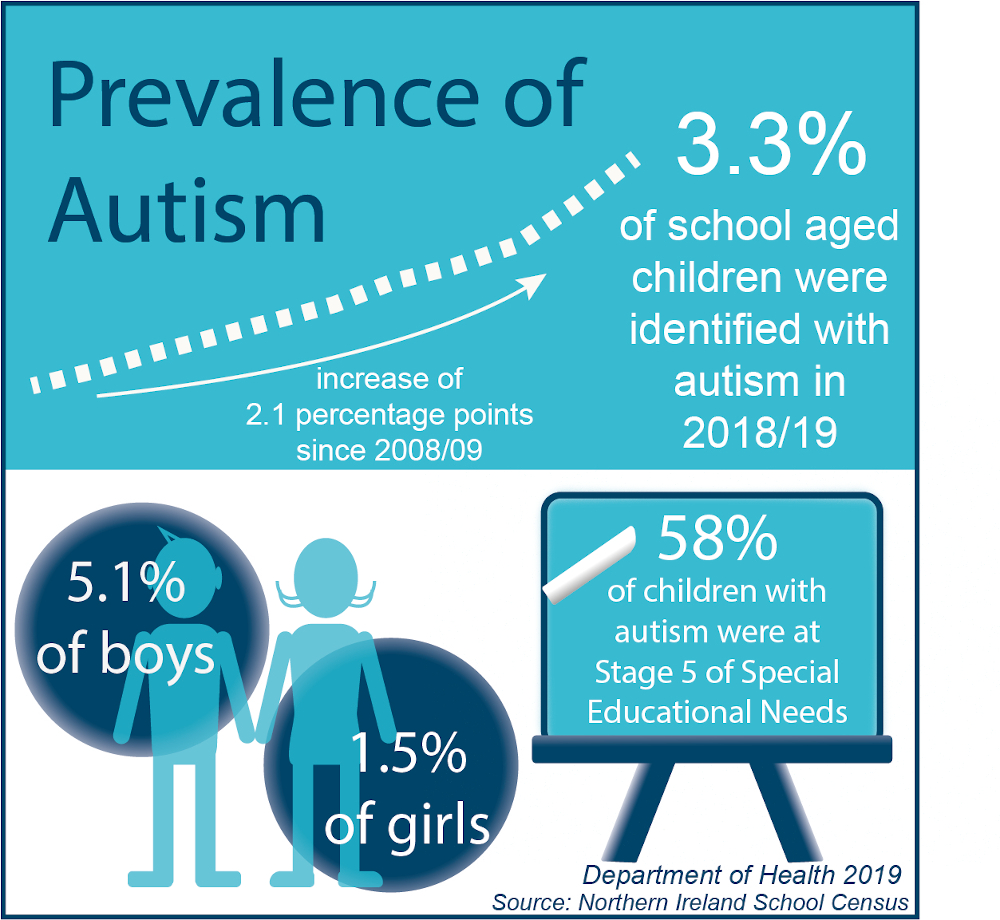
Common benefits of Bowen treatment noted by parents
- Quieter, happier children
- Improved concentration
- Improved coordination
- Improved interaction in play / with pets
- Reduction of obsessive/repetitive behaviour
- Decrease of anger / frustration
- Improved sleep
- Reduced destructive behaviour of self / property
- Improved use of language
- Increased eye contact
- Improved family life.
- Parents’ load relieved – family togetherness enhanced
For further reading/reference please see –
http://www.bowenclinicfrome.co.uk/downloads/Nurse2Nurse-cp.pdf
http://www.bowtech.com/WebsiteProj/documents/1656-Bowen%20Article.pdf
Case History
I first met James along with his mother Karen in March of 2018. James was 13 years old at the time, and on the Autistic Spectrum. He had problems in utero & birth, and had suffered with digestive issues for several years. The primary reason for trying Bowen Therapy was to improve James’s ability to swallow food without the need to puree it first. Many issues had been resolved with natural therapies but swallowing was still a huge problem. He had vomited for years so James was sensitive in his throat. James was unable to chew and swallow solid food, and eating solid food seemed to induce the gag reflex and cause vomiting. Karen was unsure if this was physiological or psychological or a combination of both.
Our first session
Our first session was slightly emotional for James. He was unsure of this new person and new environment, and when we tried to work on the treatment table he got a little upset. We decided straight away to treat him on his mums lap or on the sofa next to mum. As the session progressed he relaxed slightly but was still quite tense and unsure. James’s muscles were very tight and his breathing shallow and irregular.
The feedback
My feedback after the first visit was positive and Karen informed me he slept well that night and asked for a nap the next day, so she was happy. I then had a break of several months before I saw James again as we both went away for our respective summer holidays. When I saw him again he was more relaxed and Karen informed me his well-being was much improved. His digestive issues were improving, but this area still needed work along with his anxiety. We started treating James on the floor on mats and blankets, and this is something he became very comfortable with. Sometimes he brings his cars and lines them all up before we begin the session, which is something that we always smile about. But the priority is for James to feel happy and relaxed, and I think that’s something that we’ve achieved. On the rare occasion James becomes restless or unhappy, we cut the session short. His body is telling us that’s enough for today!
Gradual change
We tended to schedule appointments at weekly or bi weekly intervals depending on James’s schedule, and this worked well. On each subsequent visit Karen informed me of progressive improvements. James started asking for extra food and his appetite increased. Karen was gradually able to make the food courser and courser, and James’s incidence of vomiting decreased. He was vomiting far less at night and there is less inflammation (he had stopped vomited phlegm for some time). There was an improvement in digestion. He is still very thin but has grown considerably in length. James’s sleep was good, and his anxiety had decreased. His concentration improved at school and his language and vocabulary also improved. His family had noticed that he was now able to walk for longer periods when previously he had been unable to sustain long walks. After several months James learnt to ride his bicycle, a big milestone in any child’s life and something that previously he had been unable to do, struggling with balance and coordination. He could balance better on one leg, and his jumping had improved.
Proven change in the ANS
One of the most interesting aspects of treating James was the fact that he was using Nerve Express. Nerve-Express is a fully automatic, non-invasive computer-based system designed for quantitative assessment of the Autonomic Nervous System (ANS) based on Heart Rate Variability (HRV) analysis. Every week James would be assessed through this system and his family would be provided with a digital reading of his sympathetic and parasympathetic levels. This was fascinating because we know Bowen works by switching the body from a parasympathetic state to a sympathetic state where healing can occur. This was a unique chance to actually monitor these levels, with real data, alongside regular treatments. This provided clear evidence that James’s sympathetic levels were steadily dropping and his parasympathetic levels increasing over the weeks and months until he reached a healthy stable state. This coincided with his mothers observations of his improved health and reduced anxiety levels. It also was something I could observe in treating James week to week. He was happy and relaxed, and I noticed his muscles were no longer hard and tense. A big change was also his breathing patterns. When I first started working with James he would hold his breath for long periods, and the just do shallow breathing. He was tense and seemed to be ‘holding on’ to his breath. As time progressed his breathing became slow and deep, and he no longer held his breath.
Interaction and Show of affection
James became very comfortable in my home where treatments take place, and he loved to interact with my cat. The cat quickly learnt that James would be giving him a treat after his treatment and tended to turn up at the appropriate moment! In fact James became so at ease that he would go to the cat food cupboard himself and feed the cat, an initiative my overweight cat really appreciated! One of my favourite moments was when James gave me a ‘family hug’ together with his mum. That was such a beautiful, touching gesture for him to share with me.
Conclusion
James still has problems swallowing, and this is an area that will perhaps take some time to resolve. The hope is that it will keep improving incrementally with each session, and along side this I’m sure the other positive changes that James has experienced will continue as well.
It’s been a pleasure to see James and his mum Karen every week, and so satisfying to see all the small and large improvements that have taken place. I think James and his family have benefited from this amazing therapy, and I just feel lucky to be a small part of the process. James’s family is moving back home to the UK soon, but Karen says she will certainly maintain his Bowen treatments there and looks forward to more improvements.
Karen - "He manages to focus for longer at school"
James
1. Digestion – There is an improvement in digestion. He is still very thin but has grown a lot in length. Lot less night vomiting and also less inflammation (no vomiting phlegm for some time now)
2. Swallowing – We have seen some improvement in swallowing as he can tolerate more course textures. He does still have a strong gag reflex
3. Sleep Patterns – He does sleep well. He didn’t have any sleeping problems before. Sometimes still wake up early but does manage to go back to sleep.
4. Is there a reduction in anxiety and stress – Yes, able to manage anxiety better (NervExpress software) shows improved levels in parasympathetic and sympathetic.
5. Is there a reduction in anger / rage episodes (if applicable) – He still has some episodes but this can also be related to age and personality. Chirology done at age 4-5 showed his in his personality that he angers quickly. He shows less resistance to go to therapy sessions at school
6. Concentration – Seem to be improved. He manages to focus for longer at school
7. Is there a loss of some obsessive or repetitive behaviours – Not struggling with repetitive behaviours. Still struggling with his obsession of pushing shopping trolleys and putting baskets back in supermarkets
8. Does he show an increase in eye contact – He still tends to avoid eye contact if he doesn’t want to do a task
9. Has his interaction improved – Not struggled with this, always been social
10. Any increase in use of language –
Language/vocabulary is improving
11. Has his comprehension improved
Still struggling with instructions. Comprehension of stories at school good
12. Is there and improvement in co-ordination (walking, cycling etc.) –
Yes. Can now cycle. Balance on one leg and jumping also improved
13. Any effect on hyperactivity –
Still active and struggling with impulse control
14. Did he walk on his toes and is there any improvement –
Not applicable
15. Is there a reduction in abusive behaviour on himself or property (if applicable) – No self-abuse. Will throw something in anger, but has reduced
16. Has family life improved?
Since he is less sick (vomiting), there is a definite improvement as that has also improved his behaviour

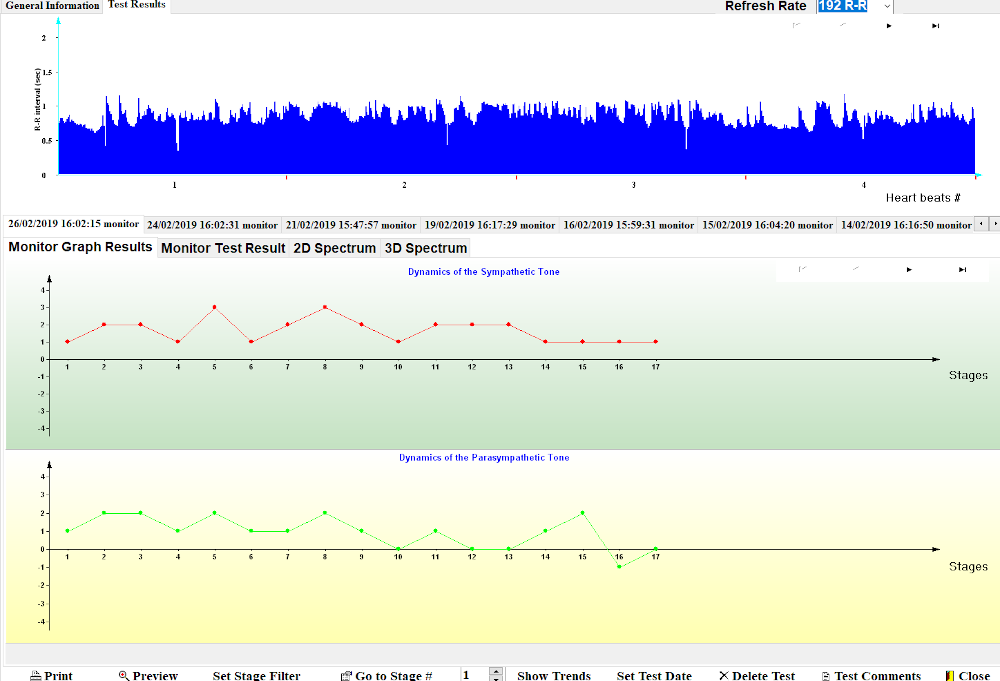
The figures above demonstrate the change in the ANS reading using the Nerve Express software before and after Bowen, demostrating a noticeable shift toward parasympathetic ANS after Bowen.
0 Comments